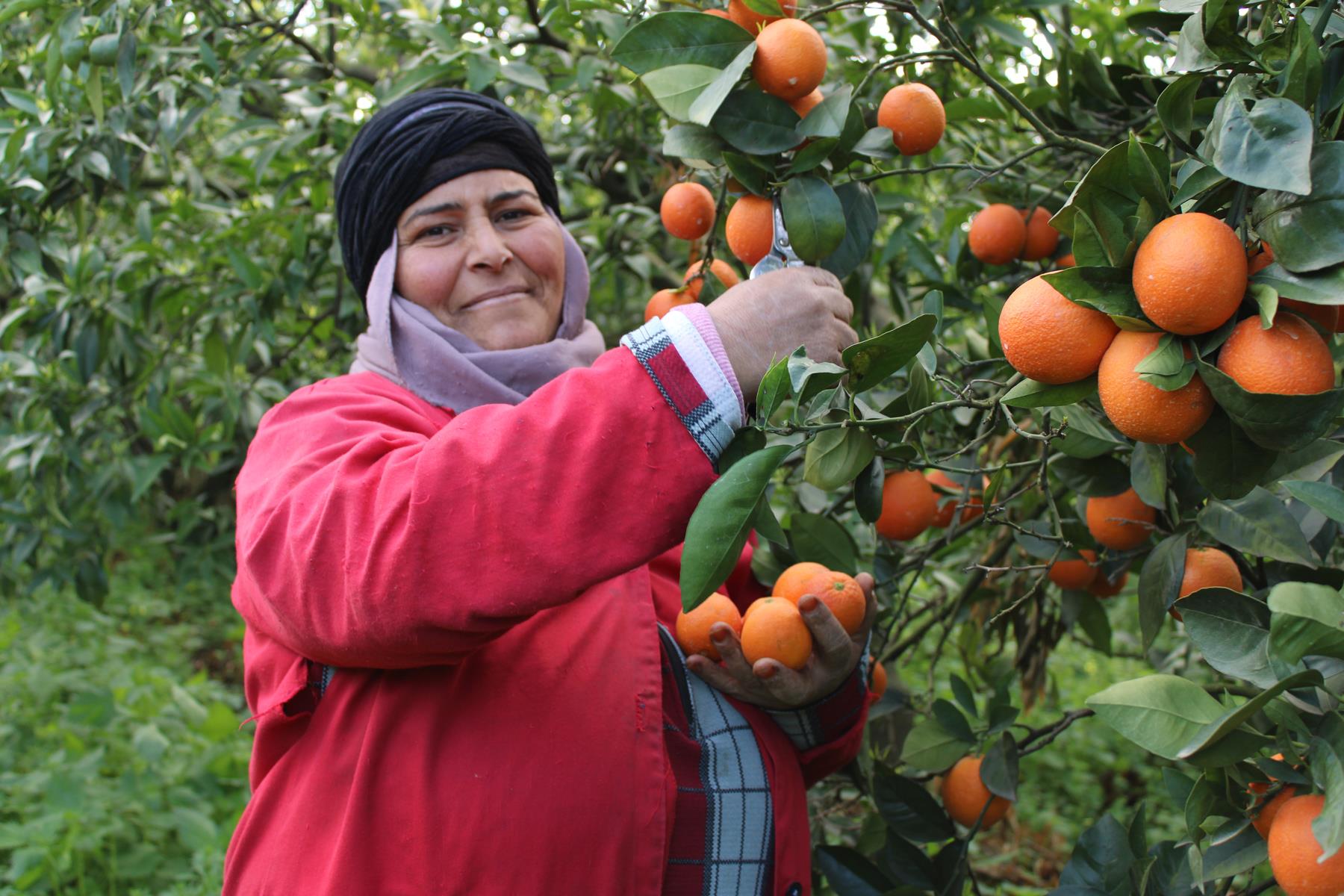Tunisia’s “Queen of Oranges”
"It is tasty and full of health benefits, especially in these times of crisis," says Fehria, a timid, middle-aged farmer from Cap-Bon, as she cuts the stalks off oranges.

Feria harvests the “Queen of Oranges”, more commonly known as the Maltese orange, in the orchards of Cap-Bon, Tunisia. ©FAO/Souha Yacoub
The Maltese orange, what Tunisian locals call the “Queen of Oranges”, certainly originated in Asia, but few agree on how it arrived in Tunisia. Some say it was introduced from Spain at the beginning of the 17th century. But this doesn’t explain the appellation…
Malta lies just 284 kilometers from modern Tunisia – so the orange might have been introduced directly from here. The fruit was certainly cultivated on the Mediterranean island in the 9th century.
In any case, the fruit became known as the ‘Maltese orange’ about 250 years ago and was celebrated in cookbooks, even inspiring the French sauce maltaise (a derivative sauce of Hollandaise sauce with Maltese orange juice and zest). Needless to say, the orange is highly praised in Europe and beyond.
Full of benefits
The Maltese orange belongs to the Rutaceae family. It resembles a half-blood orange and is cultivated most successfully today in northeastern Tunisia, specifically on the Cap-Bon peninsula, near the coast of Hammamet.
Learn more
